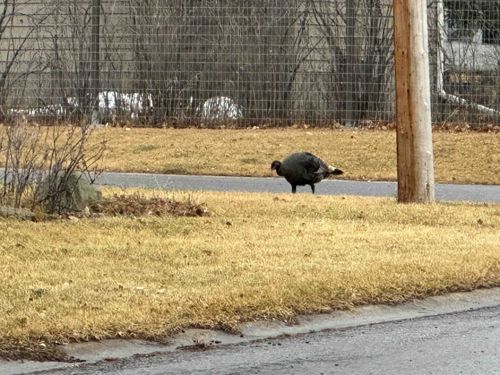Wild Turkey
Classification: Class: Aves, Order: Galliformes, Family: Phasianidae, Genus: Meleagris, Species: Meleagris gallopavo

Brief Description
The Wild Turkey is a large, ground-dwelling bird native to North America. Known for its distinctive gobble call, it is the heaviest and largest species of Galliformes. Males are larger and more brightly colored than females, sporting a fleshy wattle and snood on their heads.
Additional Information
- Region of Origin: North America
- Typical Sighting Period: Year-round, with increased activity during spring (breeding season) and fall (foraging)
- Plumage Details: Males (toms) have iridescent bronze-green bodies, red, blue, and white head and neck, and a prominent 'beard' of coarse feathers on their chest. Females (hens) are generally duller in coloration with more subdued brown and gray feathers, making them well-camouflaged. Both sexes have strong, scale-like legs and broad, rounded tails.
- Ecological Significance: Wild Turkeys play a role in seed dispersal through their foraging habits, eating a variety of seeds, nuts, and insects. They also serve as a prey species for various predators, contributing to the food web of their ecosystems. Their presence can indicate healthy forest and woodland habitats.
- Conservation Status: Least Concern (by IUCN Red List). Wild Turkeys have made a significant comeback from near extinction in the early 20th century due to successful conservation and reintroduction efforts.
- Observation Tips: Look for Wild Turkeys in forests, woodlands, and open clearings, especially near agricultural fields. They are often seen foraging on the ground in groups. Early morning and late afternoon are prime viewing times. Listen for their distinctive gobble, especially during spring. Approach quietly and avoid sudden movements as they are wary birds.